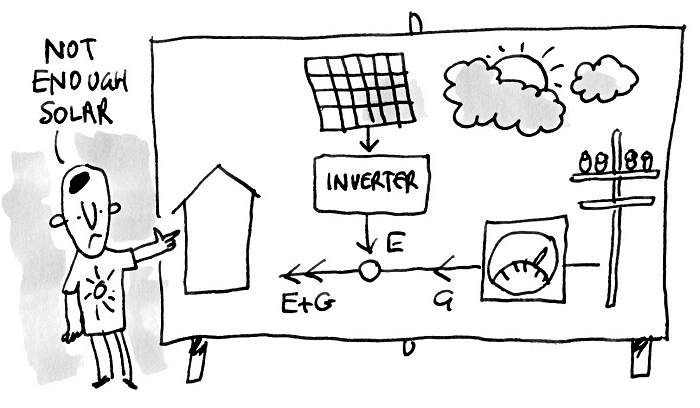

- Smart utility credit purchase vs behind the meter install#
- Smart utility credit purchase vs behind the meter generator#
While they have the potential to deliver up to 2,000 kW hours of electricity for every kW of capacity, how the system is placed is important to estimating how much electricity will be generated. Wind systems typically consist of individual turbines and vary widely in size and height. A 2 kW solar power system would cover an average of one-third of a typical household's electricity use. These systems deliver an average of 1,200 to 1,300 kW hours of electricity for every kW of capacity. The size and complexity of solar electric systems vary, but most residential systems have a capacity between 1 and 5 kW. These systems are most productive during the summer, but they can still generate electricity during the cloudier fall and winter seasons. Solar electric systems generally consist of photovoltaic panels installed on a building's roof to capture energy produced by the sun.

Residential and small business customers typically invest in either a solar (photovoltaic, or "PV") system or a wind system.

However, customers who are "time of use" customers are compensated at time-of-use rates. These credits will be carried over month-to-month, with the annual period running from May to April, or November to October, at the customer's discretion.Ĭustomers with eligible renewable generators between 40 kW and 2 MW will receive credits equal to the utility's avoided cost for their excess generation. These customers will be compensated for excess electricity generated by their renewable energy systems at the same rate that they pay when buying electricity from their utility. Under Illinois rules, eligible renewable generators of 40 kW or less receive a one-to-one retail rate credit. Applications for the program are accepted on a first-come, first-serve basis. Commonwealth Edison, the Ameren Illinois Utilities, and MidAmerican Energy Company must now offer customers credits on their electric bills for electricity generated by renewable energy systems. The Illinois net metering program began April 1, 2008. How does the Illinois net metering program work?Ī. Homeowners and small business owners who have a solar power system or a wind turbine can use net metering to offset their traditional utility costs while using cleaner energy.
Smart utility credit purchase vs behind the meter generator#
Net metering is a way to capture the energy used and produced by a renewable energy generator located at a home or small business.
Smart utility credit purchase vs behind the meter install#
What should I know before I install a system?Ī. How do I earn energy credits through net metering? How does the Illinois net metering program work? Using Renewable Energy to Lower Your Electric Bill Energy Efficiency | Net Metering | Compact Fluorescent Light Bulbs


 0 kommentar(er)
0 kommentar(er)
